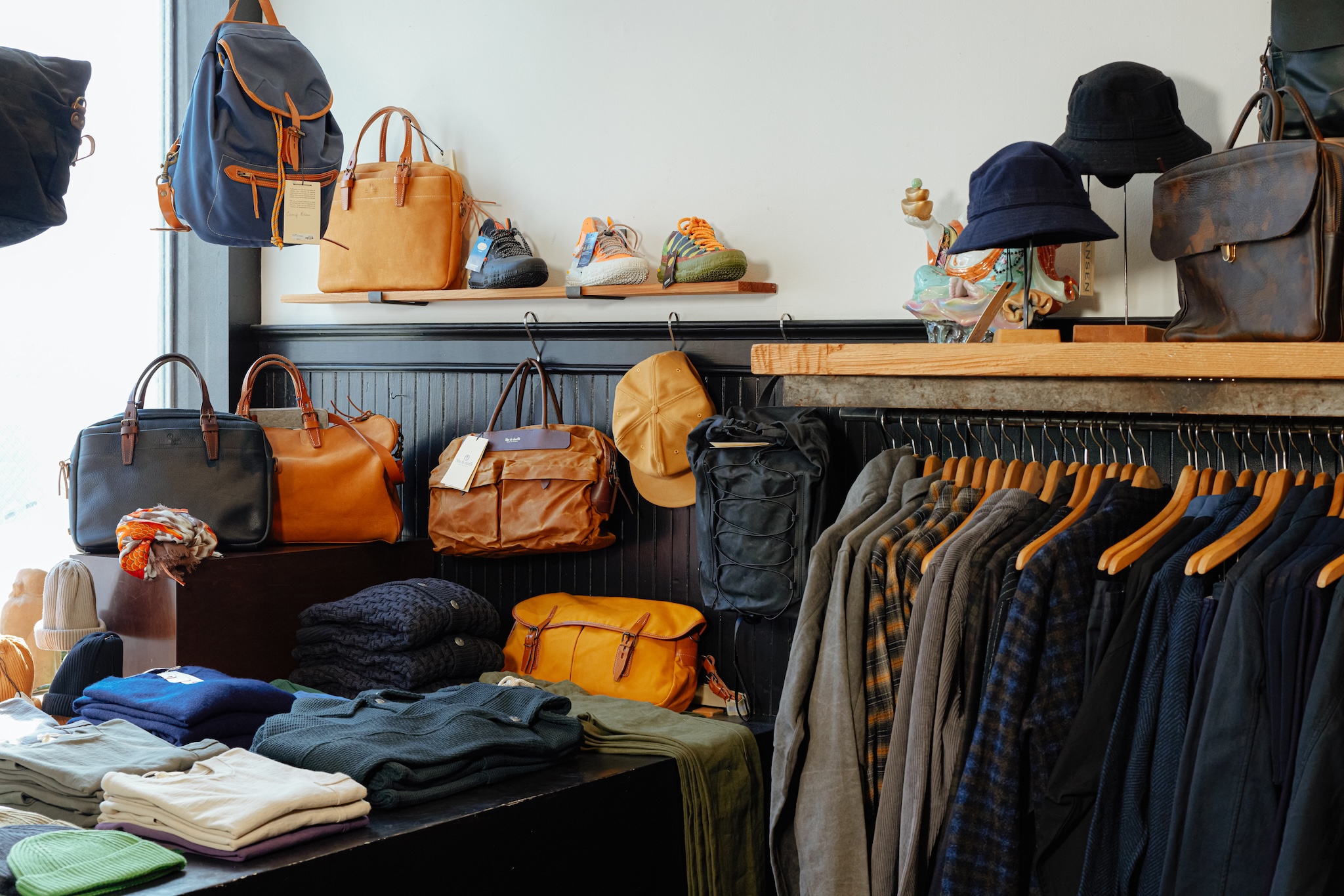

For a small business, every dollar counts, which is why keeping good records and a close eye on your inventory is so important. As an independent retailer, it may seem overwhelming to consider the strong security measures and loss-prevention strategies used by bigger companies. However, making small changes to your approach can have a significant effect and help you have more control over your business.
Retail losses can stem from shoplifting, internal theft, pricing inaccuracies, and breakage, among other things. Globally, retail losses and shrinkage added up to $132 billion in 2024. In addition to direct financial impact, loss also contributes to inventory discrepancies, poor efficiency, inaccurate sales forecasts, and business instability.
While loss is an issue for all retailers, you can address it head-on with some basic adjustments in your store. Retailers can both safeguard their assets and create a more efficient, data-driven, and welcoming shopping environment. Additionally, addressing some of these loss-prevention strategies can help minimize financial loss, increase operational efficiency, and improve brand reputation with customers. For small retailers, this can be a tricky balance, ensuring that loss-prevention strategies are in place without being overbearing to customers.
Where does retail loss come from?
Many people associate retail loss with theft, but in reality, there are a wide range of causes. A good first step is to learn what might be contributing to loss in your store:
- Inventory error: A discrepancy between actual stock levels and what is reported by your inventory management systems. This can be frustrating for shoppers when they try to buy an item that’s actually out of stock. It can also give you an inaccurate picture of your inventory turnover, leading you to over-order items unnecessarily.
- Pricing inaccuracies: Items are marked with incorrect prices, which might mean selling products at a loss or deterring customers with overly high prices. Selling products to customers for the wrong amount hurts your store’s profitability.
- Product obsolescence: Products become outdated or undesirable, making it difficult or impossible to sell them at full price. This is common with tech items, since standards change rapidly, as well as seasonal items that are relevant for only a short while. To move these products, retailers often resort to marking down items significantly, cutting into the profit margin.
- Breakage and damage: When goods become unsellable due to physical damage as a result of an accident in shipping, stocking the shelves, or customers handling the item. These unsellable items mean direct financial loss to the business.
- Missed deadlines for returns: Not returning unsold inventory to suppliers by a specific date can leave you unable to receive a refund or credit for these items. This ties up capital in unsellable stock and can lead to reduced cash flow and profits.
- Shipping inaccuracies: This can refer to both orders coming into your store from vendors and orders you ship out to customers. When packages contain the incorrect number or type of items, it can result in stock shortages, excess inventory, or additional shipping costs—all of which can reduce profit margins.
- Internal theft: When employees steal merchandise from their employer. This hurts profits and can increase operational costs, like paying for replacement products and putting security measures in place. It also erodes trust and morale in your team. According to Capital One, 57% of surveyed small businesses experience internal theft.
- External theft: When someone comes into your store and steals merchandise, also known as shoplifting. Each theft means you’re losing potential sales on money from sales.
- Excessive gifts, discounts, and samples: Sometimes store owners will give away merchandise for free—or at a deep discount—for promotional purposes or to build goodwill with preferred customers. While beneficial for marketing, excessive giveaways can come with a significant cost, reducing the overall profit margin if not managed carefully.
- Wastage: The loss of goods due to spoilage, expiration, or external factors like power outages, particularly for perishable items. This leads to direct financial loss as the cost of these goods cannot be recuperated through sales.
How are retail asset protection and retail shrinkage related to loss prevention?
Retail asset protection is aimed at safeguarding the entirety of a store’s assets. This extends beyond inventory to include a store’s equipment, employees, and even customer data. It involves implementing security measures, employee training, and policies to mitigate a wide range of risks like theft, fraud, and accidents.
Retail shrinkage prevention (or loss prevention) on the other hand specifically targets reducing inventory loss. It focuses on combating factors like theft, inventory errors, and product damage. While shrinkage prevention is a crucial aspect of asset protection, it’s just one part of the broader strategy to secure and sustain a retail business’s diverse assets.
What to do about it? Top loss prevention strategies in retail
For every type of loss, there’s a way to address its root cause and set yourself up for a more sustainable business. Unlike large retail stores that are most likely to employ security personnel, smaller independent retailers can use simple strategies. Here are some powerful tools to help you mitigate losses from your store:
An advanced point-of-sale system
A state-of-the-art POS system can be your best asset in loss prevention. You can use it to ensure accuracy in inventory management and pricing, verify shipments upon arrival, track expiration dates of perishable items, and employ data analytics for trend tracking and sales forecasting. It can also track transactions by employee logins.
Strategic inventory planning
Develop a comprehensive inventory strategy to anticipate consumer trends and optimize ordering schedules. This approach helps in maintaining ideal stock levels without overbuying, thereby reducing the risk of obsolescence and excess inventory.
Optimal storage solutions
Ensure proper storage conditions for all merchandise to prevent damage and wastage. This includes climate control for sensitive items and secure storage for high-value products. An example of this would be placing video games or game consoles behind a lock and key.
Prompt reporting of broken or missing items in shipments from vendors
Establish a protocol for immediate reporting and documentation of any breakages or damage during shipping. This will make it easier to make swift claims and order replacements.
Optimize store layout and design
Ensure you plan the flow of traffic through your store to maximize visibility and minimize blind spots, thereby deterring theft. It’s also a good idea to strategically place merchandise to minimize the risk of in-store breakage. Use sturdy display surfaces and consider the store layout to avoid accident-prone areas.
Clear employee conduct guidelines
Put into place a clear code of conduct for all employees, regarding integrity, ethical behavior, and adherence to loss-prevention policies. Make it clear that active customer service—rather than treating shoppers with suspicion—can also deter theft. This includes greeting all customers as they enter the store, reporting any theft to managers, and filing police reports as necessary.
Utilization of testers and samples
When available, order tester products for customer trials instead of using saleable inventory, thereby preserving stock. Many items on Faire offer this option for retailers.
Have a strategy for freebies
Implement a system for tracking promotional items and giveaways to ensure they are always accounted for and used effectively in marketing campaigns. Also, establish a standard, low-cost item to be used as a giveaway to balance customer delight with cost-effectiveness.
Loyalty card programs
Instead of relying on freebies, offer loyalty card programs to reward repeat customers. This method encourages repeat visits while maintaining inventory integrity.
Security cameras
According to an SMB prevention-loss survey conducted by Software Advice, 53% of small retailers utilize security cameras to keep an eye on their store. A camera can be installed to watch your store’s entrance and cash register. Not only does the camera act as a deterrent, it can also help with providing evidence if there are any accidents or incidents.
Integrating a comprehensive loss-prevention strategy can be a game changer for your retail store. The payoff is a vibrant, efficient retail space where business stability, customer delight, and a motivated team all come together.




